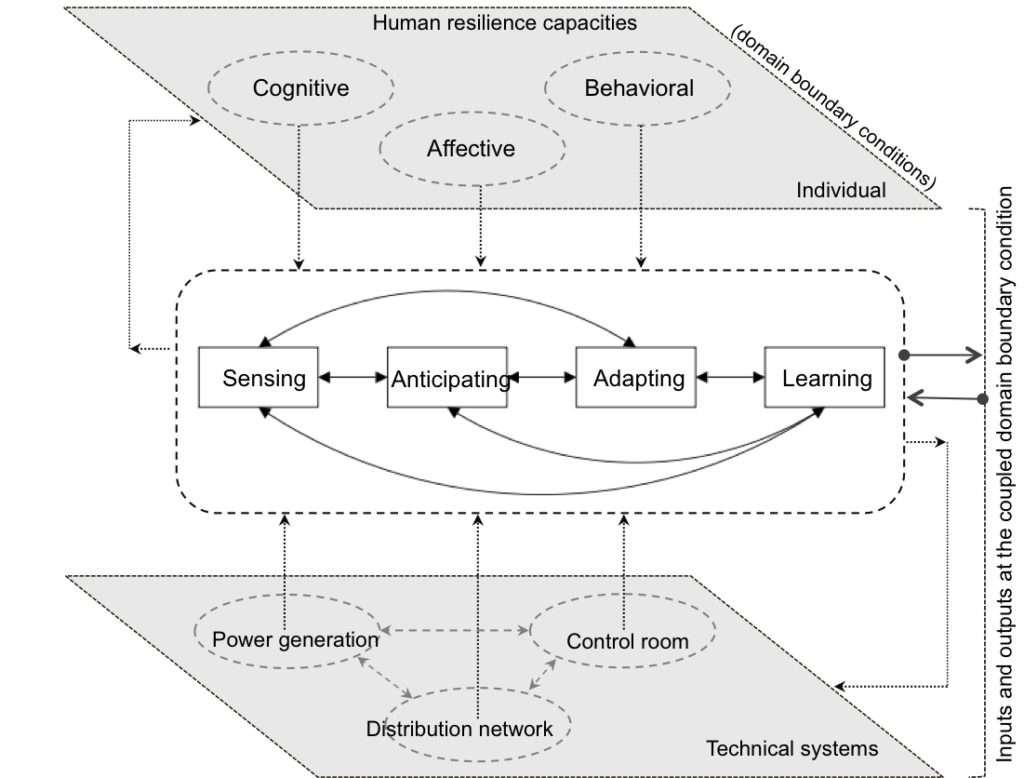–Abstract–
A resilience engineering approach to integrating human and sociotechnical capacities and processes for national infrastructure systems
Published in ‘Homeland Security and Emergency Management’, 3 April 2019
Thomas, John E. (1), Eisenberg, Daniel A. (2), Seager, Thomas P. (3) , Fisher, Erik (3)
1) University of Colorado, Boulder
2) Naval Postgraduate School, Monterey, CA
3) Arizona State University, Tempe, AZ
Despite Federal directives calling for an integrated approach to strengthening the resilience of critical infras-tructure systems, little is known about the relationship between human behavior and infrastructure resilience.While it is well recognized that human response can either amplify or mitigate catastrophe, the role of humanor psychological resilience when infrastructure systems are confronted with surprise remains an oversight inpolicy documents and resilience research. Existing research treats human resilience and technological resilienceas separate capacities that may create stress conditions that act upon one another. There remains a knowledgegap regarding study of those attributes in each that build infrastructure resilience as an integrated system ofhumans and technologies. This work draws on concepts found in the resilience engineering and psychologyliterature to examine the dynamic relationships between human resilience and the resilience of complex, socio-technical critical infrastructure systems. We identify and organize 18 system capacities and 23 human capacitiesthat influence infrastructure resilience. We then correlate individual human and system resilience capacities todetermine how each influences four socio-technical processes for resilience: sensing, anticipating, adapting, andlearning. Our analysis shows that the human and technical resilience capacities reviewed are interconnected,interrelated, and interdependent. Further, we find current literature is focused more on cognitive and behavioral dimensions of human resilience and we offer ways to better incorporate affective capacities. Together, we present a simple way to link the resilience of technological systems to the cognitive, behavioral, and affective dimensions of humans responsible for the system design, operation, and management.
Linking human and technical resilience capacities via the SAAL socio-technical processes
